The king cobra (Ophiophagus hannah) is the longest venomous snake in the world, growing up to 10 to 13 feet on average. The longest individual recorded was 19.1 feet in length. King cobras are sexually dimorphic, with the males being larger than the females. King cobra males captured in the Western Ghats weighed up to 10 kg while females weigh around 5 kg. The etymology of its zoological name come from “Ophiophagus” meaning “snake-eating” and hannah derived from the name of tree-dwelling nymphs in Greek mythology.
The king cobra is a rare but widely distributed species. It occurs in a wide variety of habitats ranging from grasslands, mangrove swamps, and broad-leaved forests to rainforests of South and Southeast Asia. In India, they are found in the Western Ghats, foothills of the Shivaliks and Terai regions of the state of Uttarakhand, Eastern Ghats in the states of Andhra Pradesh, Orissa and West Bengal; Sikkim and Northeast states of Assam, Meghalaya, Arunachal Pradesh, Nagaland, Tripura and Manipur and the Andaman and Nicobar Islands.
King cobras feed on rat snakes (Ptyas mucosa) and venomous species like the spectacled cobra (Naja naja), Malabar pit viper (Craspedocephalus malabaricus) and hump-nosed pit viper (Hypnale hypnale). They have also been observed feeding on banded kraits (Bungarus fasciatus), Indian rock python (Python molurus) and the reticulated python (Malayopython reticulatus). King cobras actively forage, relying on scent and chemical cognition to locate their prey. They are primarily diurnal, though there have been occasional observational records of king cobras being active after dark.
All images © Gowri Shankar and Chetan Rao (first image). Article continues below the images.
King cobras are the only species of snake in the world which build a nest. Nest building occurs soon after the breeding season between March to April in the population in the Western Ghats. However, nest building starts in August in populations occurring in North India. The female remains with the nest and guards it. The clutch size is ~20 eggs. The nest chamber is designed in such a way that it remains dry and the temperature inside is around 28 °C (82° F). The nest is a mound of leaf litter and other dead vegetation which acts as a substrate. The female uses her body, coils around the leaf litter, and drags the substrate to one spot.
Although king cobras often come in contact with people, bites on people are rare. King cobras are revered by people in many parts of the Western Ghats. IUCN states it as a ‘Vulnerable’ species. It is a protected species in India under Schedule II of the Wildlife Protection Act (1972).

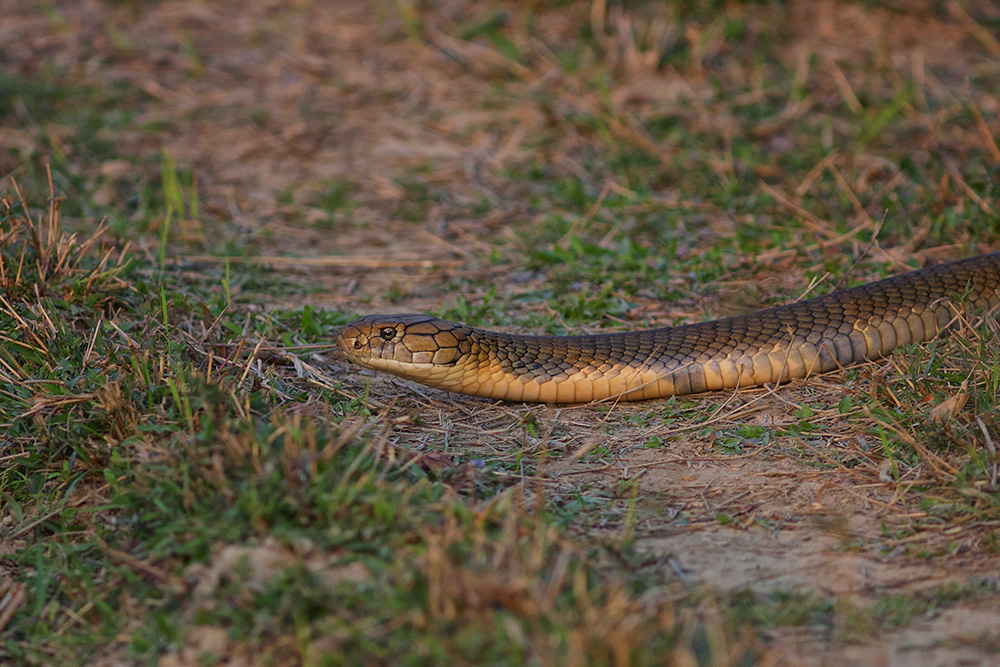
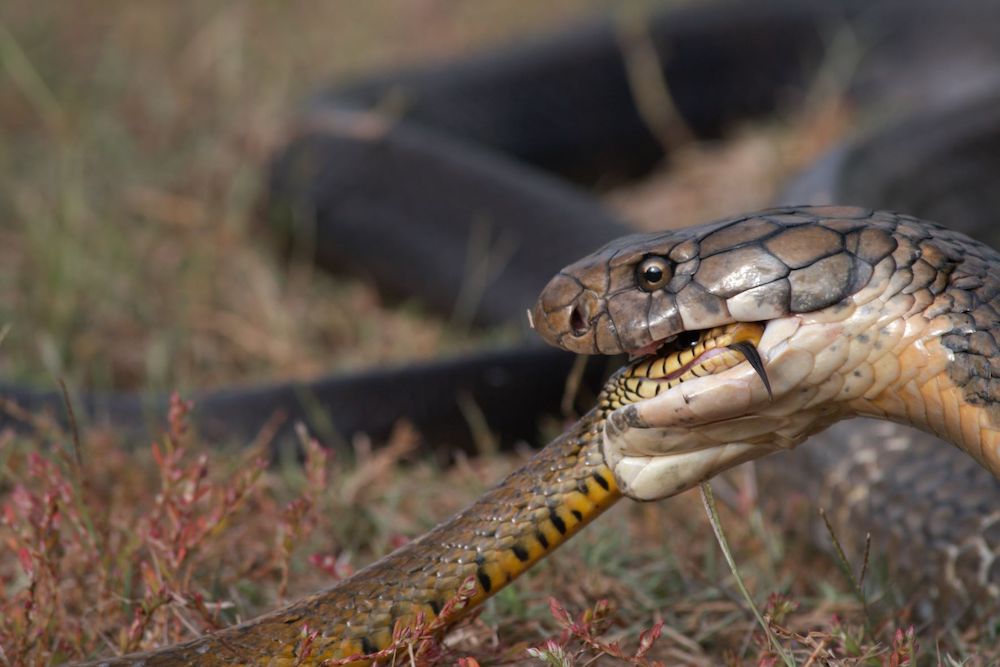
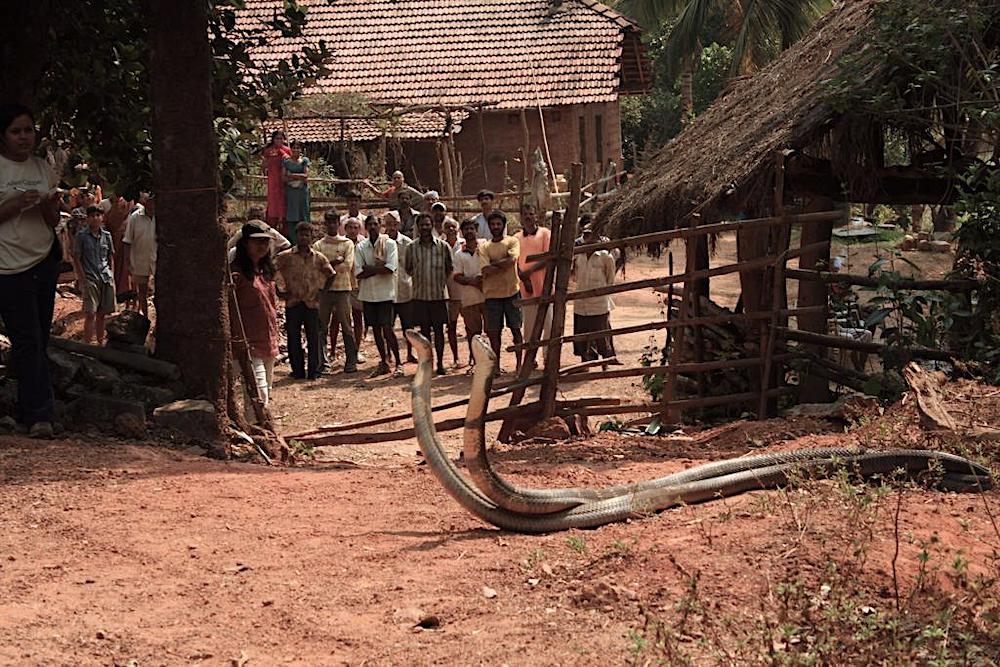
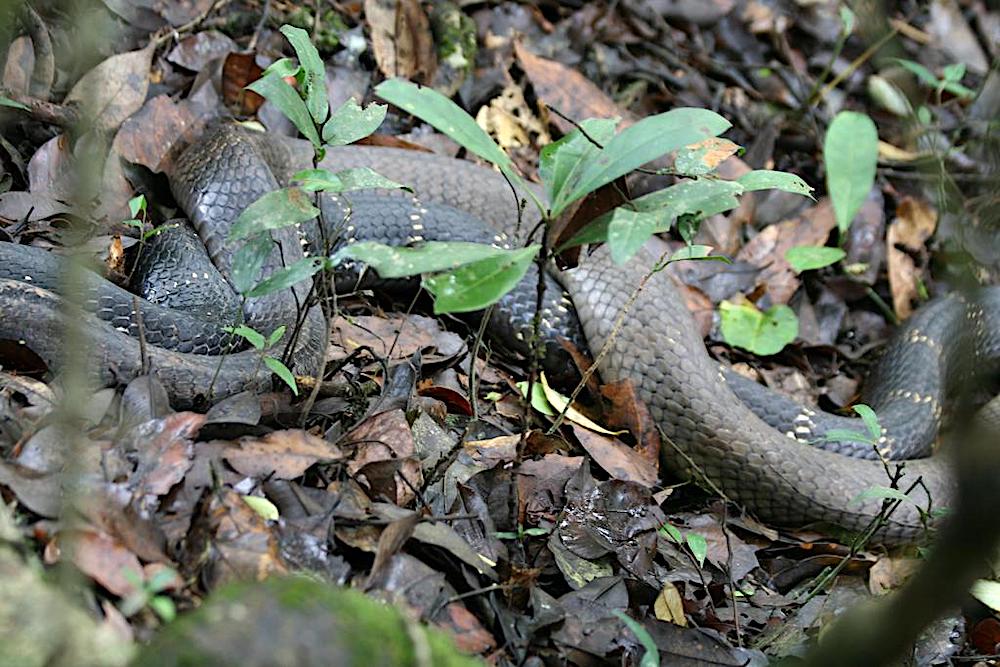
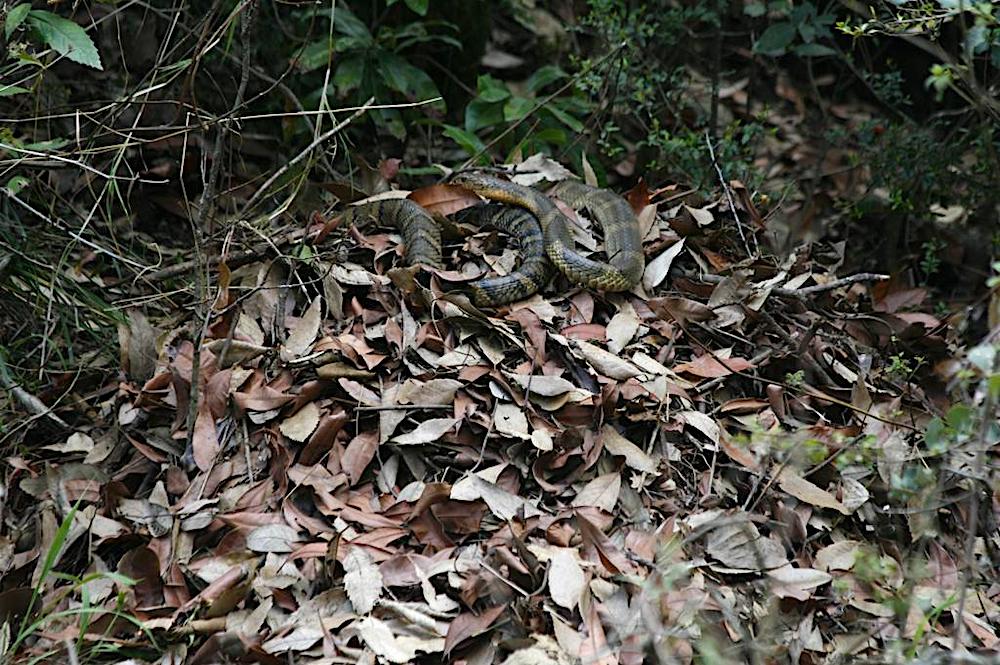
 CI is a non-profit, non-commercial portal that aims to facilitate wildlife and nature conservation by providing reliable information and the tools needed to campaign effectively.
CI is a non-profit, non-commercial portal that aims to facilitate wildlife and nature conservation by providing reliable information and the tools needed to campaign effectively.
Chosen as 'Picture of the Week'
The king cobra is the world's longest venomous snake and is widely distributed from India to the Philippines. It is the only snake that builds a nest. A recently published study reveals that there are multiple species of the king cobra in the wild.